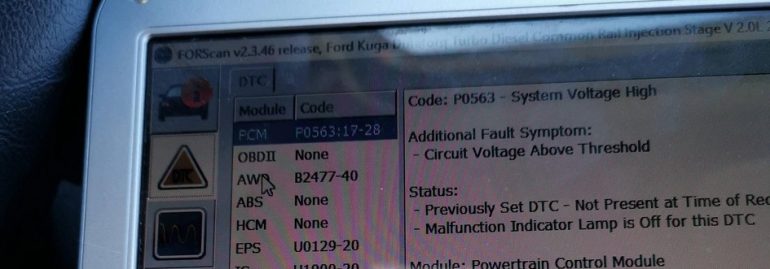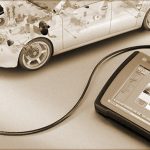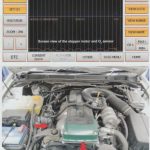Having a Check Engine Light on? If so, you probably have an errant Diagnostic trouble code (DTC) on your car. If this is the case, this article will explain what these codes are and how to clear them. Read on to learn how to find and clear your Ford’s DTC. This article will be useful to any new driver, regardless of the make and model of their vehicle. We will also discuss why identifying and clearing these codes is important.
Check engine light on
Upon seeing that your Ford DTC has turned on, you should know that you should contact your car’s dealer for a checkup. Your Ford dealership will be able to decode the trouble codes and diagnose the problem. They will also be able to tell you what to do next. To learn more about the symptoms of this condition, read below. This article will help you understand what causes the DTC to appear and how to resolve it.
The Check Engine Light illuminates whenever a fault is detected in the monitored system. A scan tool is required to identify the code. Some diagnostic tools even give the code’s meaning. With a scan tool, you can find out if the problem is a simple one or a major one. Then you can make the necessary repairs. After all, the Check Engine Light is there to serve as your car’s “check engine” light, so you need to know what it means.
If your car’s DTC is flashing, it’s possible that it’s a problem with the car’s on-board computer. If this is the case, the best course of action is to consult your mechanic. It’s crucial to determine the cause of the problem before making any repairs. After a fix is made, it’s time to reset the DTC to the correct setting.
The cause of the DTC in your Ford may be the same as the one in your car. It’s possible that your Ford DTC has a faulty O2 sensor or a faulty spark plug. Other possible causes for the DTC are the aftermarket parts or a defective catalytic converter. These can lead to a costly repair bill, and the check engine light can be the culprit.
You can also try to reset the DTC without calling a mechanic. The procedure is straightforward and can save you a lot of money. You will need a software or dongle and some tools. If you have experience with these tools, you should be able to complete the task with your car. But make sure to consult with your dealership for proper diagnosis and repair. Once you’ve done this, you’ll be sure that your car’s DTC is back in business.
Diagnostic trouble code (DTC)
To troubleshoot a car problem, you must know the meaning of the diagnostic trouble code (DTC) for your specific vehicle. It is important to understand that not all problems produce trouble codes, and not all of them need urgent attention. A DTC could indicate that a sensor circuit is out of range, or that your vehicle’s emissions control system is malfunctioning. However, you still need to take care of your car’s issues, even if the trouble code is not critical.
Most vehicles store their trouble codes in either the Powertrain Control Module or Engine Control Module.
The first DTC is “Power Steering Pressure Sensor Circuit Malfunction.” This code indicates a problem with the PSP sensor’s input signal to the PCM. It is usually caused by a short circuit between the signal and power. The second code is “Control Module Programming Error.” This code indicates that the VID data is corrupted and must be reprogrammed by the PCM.
The purpose of a DTC is to help diagnose a problem with the car’s engine and determine whether it requires any repairs. For example, when the check engine light comes on, it is most often the result of a problem in the fuel level sensor circuit system or the emissions idle control system. Depending on where the light came on, a simple problem like a loose gas cap could be the culprit. In more complex cases, a DTC could be a sign of a much larger problem that needs to be fixed immediately.
Another DTC can be related to the rpm or speed limiter. This is a warning that the engine has reached its calibration limit. The PCM continually monitors both speed and rpm to set DTCs. A DTC is created whenever these parameters go out of the calibrated range. This code can be found in the EC system section. So, when your car’s rpm or speed is too high, it will cause a stall in acceleration.
Often, an MIL light will switch on and off, or it will stay on all the time. When this happens, your engine computer will automatically shift into backup mode. This “limp home” mode can cause further damage to your vehicle. It is extremely important to clear DTC fault codes before driving, and remember that clearing them by disabling the power supply will also cause the vehicle to fail emission tests. Emission testing centers use OBD scanners to find DTC codes.
Identifying code
The Ford DTC list contains a large amount of information that can help you diagnose your car’s problems. The list contains codes for the power train control module (PTC), engine, transmission, mass air flow sensor, braking system, and more. It can also contain a number with an explanation for each. The first character of the DTC (P0782) is a digit, while the next two are numbers ranging from 0 to 99.
Some codes on the list are critical, requiring immediate attention. These codes indicate a potential issue that could cause damage to your vehicle or the lives of your passengers. Typically, critical codes are those starting with “P” or “C.” Examples of these are brake failure, engine overheating, fuel leak, and other problems that require immediate attention. Other codes, called non-critical codes, are not as critical, but they do need attention.
If you find a P0246 on your car’s DTC list, you’ll want to make sure you understand the code’s meaning. P0xxx codes, for example, indicate a problem with a specific subsystem. If the P-code contains a “1,” then the problem is with the engine, and it’s a mechanical issue. P1xxx codes, on the other hand, refer to a problem with the transmission or the air metering system.
The P0128 code is a standardized diagnostic trouble code for an engine problem. This code is based on SAE definitions, and can be interpreted as a malfunction in a number of different systems. This code will indicate a malfunction of the engine’s air and fuel metering subsystem. If you have this code, it’s a good idea to take your car to a dealership for diagnosis.
To diagnose a vehicle’s faults with a DTC, you first need to locate the OBD-II diagnostic connector. You’ll usually find the 16-pin OBD-II diagnostic connector underneath the dashboard or on the left side of the steering column. Adapters for pre-1996 vehicles are required. To find the right adapter for your car, you can visit a manufacturer’s website.
Clearing code
There are a few things to keep in mind when clearing code for Ford DTC list. First, make sure you have the right list of DTCs. Some may be in a “history” category and cannot be cleared by the Ford IDS. Fortunately, there are a few ways to clear them. Let’s take a look at some of them. There’s a good chance your car has one of these.
DTCs are diagnostic trouble codes that contain information regarding your vehicle’s malfunction. By understanding the DTC, you’ll be able to identify which parts of your vehicle are malfunctioning and how they can be fixed. If you’re not familiar with what a DTC means, consult your vehicle’s manual or contact your dealer. Some scan tools also include a code definition. Before you attempt to clear a DTC, make sure to read the list and understand the meaning of the code.
The power train control module (PTC) is one component that may need repair. A malfunction in this part of the vehicle’s engine could cause a warning light or even a complete failure of the engine. This component can be easily repaired using tools designed to help you clear the code for your Ford. A reputable mechanic can use these tools to diagnose the problem and resolve it. They will be able to explain why the code is showing up and then suggest the best way to fix it.
After clearing a DTC, the vehicle will be re-tested and updated. Once the codes are removed, emissions testing will begin again. This is a great way to ensure that your Ford car is running properly. This way, you’ll be able to check if the vehicle is emitting dangerous amounts of emissions. You can also use this feature to check emissions with your emission control system and get a better understanding of how to fix the problem.
There are several ways to clear a DTC. First, you can use a diagnostic scan tool to locate the fault in your car. These tools can cost as little as $20. You can also use a wireless OBD2 scanner to pair with your smartphone or tablet. Purchasing an OBD2 scanner is one of the best investments you can make for your vehicle. When the DTC is not clear, you should take your car to a mechanic to get a proper diagnosis.





